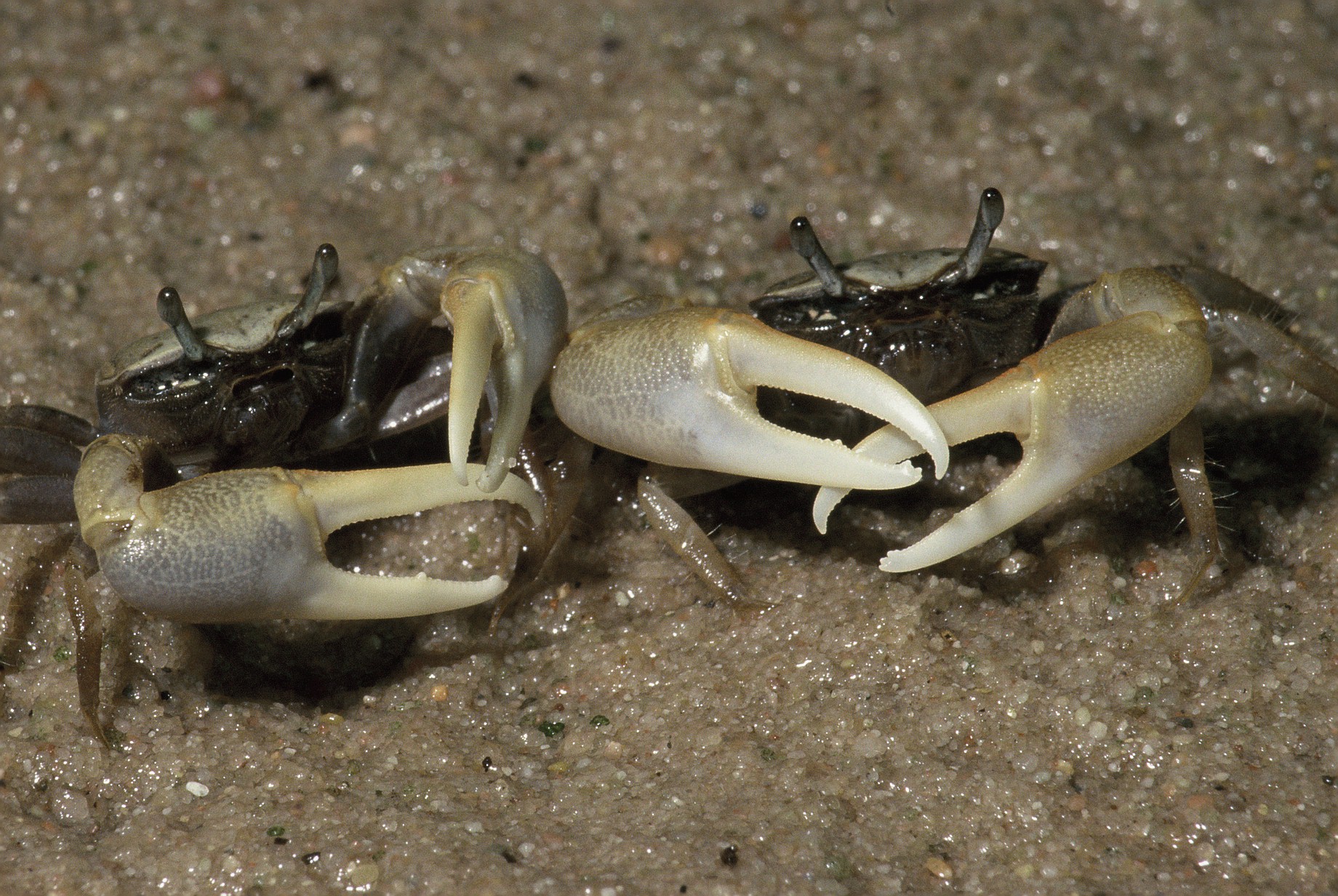Males with two large claws (a.k.a.Super-males)
The most commonly observed unusual development is the rare finding of a male with two large claws, rather than the typical one large and one small. The reason this is the most commonly observed is not necessarily that it is the most common in nature, just that it is the easiest to identify as this strange quirk of morphology can readily be seen through binoculars (unlike the others, which all require more direct examination of the reproductive organs). Males with two large claws are presumed to be at a disadvantage with respect to obtaining food, as feeding is generally done with the small claws, but as individuals with this condition are occasionally found in nature, they clearly can find a way to survive. There is some suggestion that this state is seen more commonly in laboratory-reared individuals where there may be reduced selection pressure.

A secondary issue is some of these studies have focused on very young juveniles, where the asymmetry may not be entirely set. It is not uncommon to find tiny crabs with two larger claws where these later transition to standard asymmetry as the further develop. This is very different than the rarer instances of full-sized adult males with two large claws.
| Smith (1870) | Minuca pugnax | One found in nature |
| Morgan (1920) | Leptuca pugilator | One found in nature |
| Morgan (1923) | Minuca pugnax | (Juvenile study) Reports 56 very small crabs (<3mm) found in nature with two large claws. |
| Vernberg & Costlow (1966) | Minuca rapax | (Juvenile study) Four males found in a lab reared population. |
| Takeda & Yamaguchi (1973) | Gelasimus jocelynae | One found in nature |
| Gibbs (1974) | Minuca burgersi | One found in nature |
| Williams & Heng (1981) | Gelasimus vomeris | One found in nature |
| Mulstay (1987) | Minuca pugnax | One found in nature |
| Monserrat & Rodríguez (1995) | Leptuca uruguayensis | One found in nature |
| Yamaguchi (1977) | Austruca lactea | (Juvenile study) Observed 300 lab-reared juveniles (out of ~14,000) with two large claws. |
| Yamaguchi (2001) | Austruca lactea | Mentions a few instances seen in young laboratory-reared crabs. |
| Yamaguchi & Henmi (2001) | Tubuca arcuata | One found in nature. Additional small juveniles with two large claws were observed, but experimentally this was shown to be a transient state that would not be (normally) maintained through adulthood. |
| Benetti & Negreiros-Fransozo (2003) | Minuca panema | Two found in nature |
| Lira et al. (2006) | Leptuca cumulanta | One found in nature |
| Odhano et al. (2015) | Tubuca alcocki | One found in nature |
| Vale et al. (2015) | Minuca rapax | One found in nature |
| iNaturalist Observation | Minuca minax | One found in nature |
| iNaturalist Observation | Minuca minax | One found in nature |
| iNaturalist Observation | Tubuca arcuata | One found in nature |
| iNaturalist Observation | Leptuca pugilator | One found in nature; species ID not 100% |
| iNaturalist Observation | Paraleptuca splendida | One found in nature |
| iNaturalist Observation | Leptuca pugilator | One found in nature; species ID not 100% |
| iNaturalist Observation | Leptuca pugilator | One found in nature |
| iNaturalist Observation | Leptuca pugilator | One found in nature |
| iNaturalist Observation | Austruca mjoebergi | One found in nature |
| iNaturalist Observation | Leptuca pugilator | One found in nature |